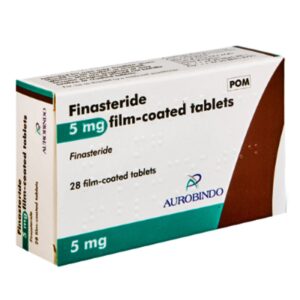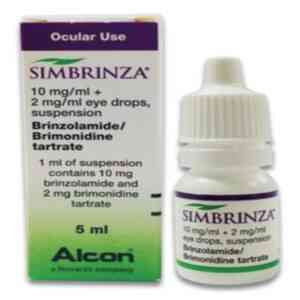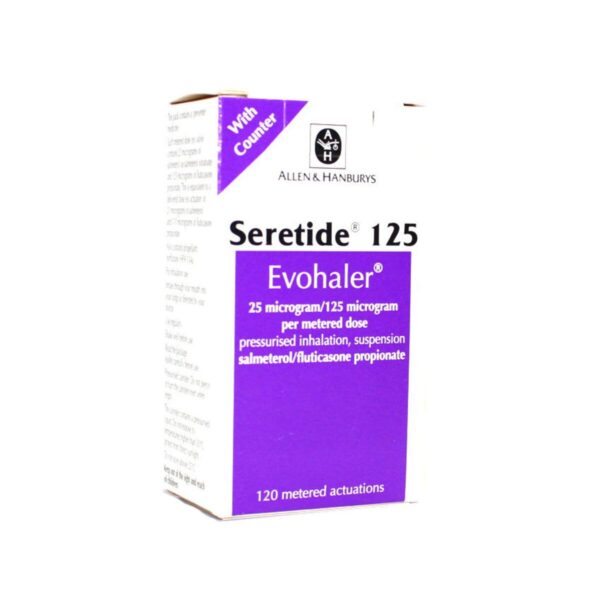- Description
- Brand
- How To Use
- Product Details
- Side Effects
- Ingredients
- How to Store
- Patient Information leaflet
- Questions & Answers
Mirtazapine Oral Solution 15mg/ml, 66ml
Introducing Mirtazapine Oral Solution 15mg/ml – A Liquid Elixir of Emotional Well-Being for Adults
Mirtazapine Oral Solution, a beacon in the realm of antidepressants, now takes a liquid form with the introduction of Mirtazapine Oral Solution 15mg/ml. Crafted to provide gentle yet effective relief from depressive illness in adults, this solution offers a unique and convenient alternative for those seeking emotional balance.
Key Features:
- Depression Alleviation: Mirtazapine Oral Solution is designed to combat depressive illness in adults, offering a lifeline for those navigating the complexities of emotional well-being. Its antidepressant properties work to restore balance and usher in a renewed sense of vitality.
- Timely Relief: Acknowledging the importance of time in mental health journeys, Mirtazapine requires 1 to 2 weeks to initiate its therapeutic effects. By the 2 to 4-week mark, users may find themselves on the path to feeling better. It is crucial to maintain open communication with your healthcare provider during this period to ensure optimal care.
- Section 3 Insights: For a more comprehensive understanding of what to expect during your journey with Mirtazapine Oral Solution, delve into Section 3, aptly titled “When can you expect to start feeling better.” This section provides invaluable information on the timeline of efficacy, guiding users through the process and addressing concerns that may arise.
- Tailored Dosage: With a liquid formulation, Mirtazapine Oral Solution allows for precise and personalized dosing. The 15mg/ml concentration ensures flexibility in meeting individual needs, granting healthcare professionals the ability to tailor treatment plans for optimal outcomes.
Mirtazapine Oral Solution 15mg/ml marks a new chapter in the evolution of antidepressant therapy, offering a liquid embrace of comfort and hope for those embarking on their journey to emotional well-being. Trust in the power of Mirtazapine to deliver relief with precision and care.
Mirtazapine Oral Solution can be used to treat certain conditions in cats and dogs when prescribed by a Vet.
Mirtazapine Oral Solution Reviews
After using Mirtazapine Oral Solution, it’s helpful to let others know about your experience. Reviews of an item help other users know that medicines received have helped the condition it is claimed for, how well the treatment worked or any issues to be aware of. We invite our users to leave a review of both their treatment and of the service provided. Click on the reviews tab to see if there has been feedback on this item.
What is the price of Mirtazapine Oral Solution?
The price of Mirtazapine Oral Solution is £195.50
Where can you buy Mirtazapine Oral Solution?
You can buy Mirtazapine Oral Solution at Dock Pharmacy Essex UK, UK Online Pharmacy.
Can you buy Mirtazapine Oral Solution Over the counter?
Mirtazapine Oral Solution is not available to buy over the counter. You need a prescription to buy Mirtazapine Oral Solution from a pharmacy. You can find more information about how to obtain the medication here:
Dock Pharmacy
128 Dock Road, Tilbury, Essex, RM18 7BJ
Tel: 01375846316
Brand
Mirtazapine
How To Use
How To Use
How to take Mirtazapine Oral Solution
Always take this medicine exactly as your doctor or pharmacist has told you. Check with your doctor or pharmacist if you are not sure.
How much to take
The recommended starting dose is 15 or 30 mg every day.
Your doctor may advise you to increase your dose after a few days to the amount that is best for you (between 15 and 45 mg per day).The dose is usually the same for all ages. However, if you are an elderly person or if you have renal or liver disease, your doctor may adapt the dose. When to take Mirtazapine
Take Mirtazapine at the same time each day
Product Details
Product Information
What you need to know before you take Mirtazapine Oral Solution
Do not take Mirtazapine: ■ if you are allergic to mirtazapine or any of the other ingredients of this medicine (listed in section 6). If so, you must talk to your doctor as soon as you can before taking Mirtazapine. ■ if you are taking or have recently taken (within the last two weeks) medicines called monoamine oxidase inhibitors (MAO-Is) ■ if you have ever developed a severe skin rash or skin peeling, blistering and/or mouth sores after taking mirtazapine or other medicinal products. Warnings and precautions Talk to your doctor or pharmacist before taking Mirtazapine. Children and adolescents Mirtazapine should normally not be used for children and adolescents under 18 years because efficacy was not demonstrated. Also, you should know that patients under 18 have an increased risk of side-effects such as suicide attempt, suicidal thoughts and hostility (predominantly aggression, oppositional behaviour and anger) when they take this class of medicines. Despite this, your doctor may prescribe Mirtazapine for patients under 18 because he/she decides that this is in their best interests. If your doctor has prescribed Mirtazapine for a patient under 18 and you want to discuss this, please go back to your doctor.You should inform your doctor if any of the symptoms listed above develop or worsen when patients under 18 are taking Mirtazapine. Also, the long-term safety effects concerning growth, maturation and cognitive and behavioural development of Mirtazapine in this age group have not yet been demonstrated. In addition, significant weight gain has been observed in this age category more often when treated with Mirtazapine compared with adults. Thoughts of suicide and worsening of your depression If you are depressed you can sometimes have thoughts of harming or killing yourself.These may be increased when first starting antidepressants, since these medicines all take time to work, usually about two weeks but sometimes longer. You may be more likely to think like this: ■ if you have previously had thoughts about killing or harming yourself. ■ if you are a young adult. Information from clinical trials has shown an increased risk of suicidal behaviour in adults aged less than 25 years with psychiatric conditions who were treated with an antidepressant. Ú If you have thoughts of harming or killing yourself at any time, contact your doctor or go to a hospital straightaway. You may find it helpful to tell a relative or close friend that you are depressed, and ask them to read this leaflet.You might ask them to tell you if they think your depression is getting worse, or if they are worried about changes in your behaviour. The use of Buprenorphine together with Mirtazapine can lead to serotonin syndrome, a potentially life-threatening condition (see “Other medicines and Mirtazapine”). Also take special care with Mirtazapine ■ serious skin reactions including Stevens-Johnson syndrome (SJS), toxic epidermal necrolysis (TEN) and drug reaction with eosinophilia and systemic symptoms (DRESS) have been reported with the use of mirtazapine. Stop using and seek medical attention immediately if you notice any of the symptoms described in section 4 in relation to these serious skin reactions. If you have ever developed any severe skin reactions, treatment with mirtazapine should not be restarted. ■ if you have, or have ever had one of the following conditions. Ú Tell your doctor about these conditions before taking Mirtazapine, if not done previously – seizures (epilepsy). If you develop seizures or your seizures become more frequent, stop taking Mirtazapine and contact your doctor immediately – liver disease, including jaundice. If jaundice occurs, stop taking Mirtazapine and contact your doctor immediately – kidney disease – heart disease, or low blood pressure – schizophrenia. If psychotic symptoms, such as paranoid thoughts become more frequent or severe, contact your doctor straightaway – manic depression (alternating periods of feeling elated/overactivity and depressed mood). If you start feeling elated or over-excited, stop taking Mirtazapine and contact your doctor immediately – diabetes (you may need to adjust your dose of insulin or other antidiabetic medicines) – eye disease, such as increased pressure in the eye (glaucoma) – difficulty in passing water (urinating), which might be caused by an enlarged prostate – certain kinds of heart conditions that may change your heart rhythm, a recent heart attack, heart failure, or take certain medicines that may affect the heart’s rhythm. ■ if you develop signs of infection such as inexplicable high fever, sore throat and mouth ulcers. Ú Stop taking Mirtazapine and consult your doctor immediately for a blood test. In rare cases these symptoms can be signs of disturbances in blood cell production in the bone marrow. While rare, these symptoms most commonly appear after 4-6 weeks of treatment. ■ if you are an elderly person.You could be more sensitive to the side-effects of antidepressants. Other medicines and Mirtazapine Tell your doctor or pharmacist if you are taking, have recently taken or might take any other medicines. Do not take Mirtazapine in combination with: ■ monoamine oxidase inhibitors (MAO inhibitors). Also, do not take Mirtazapine during the two weeks after you have stopped taking MAO inhibitors. If you stop taking Mirtazapine, do not take MAO inhibitors during the next two weeks either. Examples of MAO inhibitors are moclobemide, tranylcypromine (both are antidepressants) and selegiline (used for Parkinson’s disease). Take care when taking Mirtazapine in combination with: ■ antidepressants such as SSRIs, venlafaxine and L-tryptophan or triptans (used to treat migraine), tramadol (a painkiller), linezolid (an antibiotic), lithium (used to treat some psychiatric conditions), methylene blue (used to treat high levels of methemoglobin in the blood) and St. John’s Wort – Hypericum perforatum preparations (a herbal remedy for depression). In very rare cases Mirtazapine alone or the combination of Mirtazapine with these medicines, can lead to a so-called serotonin syndrome. Some of the symptoms of this syndrome are: inexplicable fever, sweating, increased heart rate, diarrhoea, (uncontrollable) muscle contractions, shivering, overactive reflexes, restlessness, mood changes and unconsciousness. If you get a combination of these symptoms, talk to your doctor immediately. ■ the antidepressant nefazodone. It can increase the amount of Mirtazapine in your blood. Inform your doctor if you are using this medicine. It might be needed to lower the dose of Mirtazapine, or when use of nefazodone is stopped, to increase the dose of Mirtazapine again. ■ medicines for anxiety or insomnia such as benzodiazepines, medicines for schizophrenia such as olanzapine, medicines for allergies such as cetirizine, medicines for severe pain such as morphine. In combination with these medicines Mirtazapine can increase the drowsiness caused by these medicines. buprenorphine/ opioids (morphine or naloxone) – These medicines may interact with Mirtazapine and you may experience symptoms such as involuntary, rhythmic contractions of muscles, including the muscles that control movement of the eye, agitation, hallucinations, coma, excessive sweating, tremor, exaggeration of reflexes, increased muscle tension and body temperature above 38°C. Contact your doctor when experiencing such symptoms. ■ medicines for infections: medicines for bacterial infections (such as erythromycin, medicines for fungal infections (such as ketoconazole) and medicines for HIV/AIDS (such as HIV-protease inhibitors) and drugs for stomach ulcers (such as cimetidine). In combination with Mirtazapine these medicines can increase the amount of Mirtazapine in your blood. Inform your doctor if you are using these medicines. It might be needed to lower the dose of Mirtazapine, or when these medicines are stopped, to increase the dose of Mirtazapine again. ■ medicines for epilepsy such as carbamazepine and phenytoin, medicines for tuberculosis such as rifampicin. In combination with Mirtazapine these medicines can reduce the amount of Mirtazapine in your blood. Inform your doctor if you are using these medicines. It might be needed to increase the dose of Mirtazapine, or when these medicines are stopped to lower the dose of Mirtazapine again. ■ medicines to prevent blood clotting such as warfarin. Mirtazapine can increase the effects of warfarin on the blood. Inform your doctor if you are using this medicine. In case of combination it is advised that a doctor monitors your blood carefully. ■ medicines that may affect the heart’s rhythm such as certain antibiotics and some antipsychotics. Mirtazapine with food and alcohol You may get drowsy if you drink alcohol while you are taking Mirtazapine. You are advised not to drink any alcohol. You can take Mirtazapine with or without food. Pregnancy and breast-feeding If you are pregnant or breast-feeding, think you may be pregnant or are planning to have a baby, ask your doctor or pharmacist for advice before taking this medicine. Limited experience with Mirtazapine administration to pregnant women does not indicate an increased risk. However, caution should be exercised when used during pregnancy. If you use Mirtazapine until, or shortly before birth, your baby should be supervised for possible adverse effects. When taken during pregnancy, similar drugs (SSRIs) may increase the risk of a serious condition in babies, called persistent pulmonary hypertension of the newborn (PPHN), making the baby breathe faster and appear bluish.These symptoms usually begin during the first 24 hours after the baby is born. If this happens to your baby you should contact your midwife and/or doctor immediately. Driving and using machines Mirtazapine can affect your concentration or alertness. Make sure these abilities are not affected before you drive or operate machinery. If your doctor has prescribed Mirtazapine for a patient under 18 years make sure the concentration and alertness is not affected before participation in traffic (e.g. on bicycle). Mirtazapine Oral Solution contains: ■ Liquid maltitol (E965) (a type of sugar). If you have been told by your doctor that you have intolerance for some sugars, contact your doctor before taking this medicinal product. ■ Sodium benzoate (E211) 1.2mg in each ml. Sodium benzoate may increase jaundice (yellowing of the skin and eyes) in newborn babies (up to 4 weeks old). ■ This medicine contains less than 1 mmol sodium (23 mg) per ml, that is to say essentially ‘sodium-free’.
Side Effects
Possible side effects
Like all medicines, this medicine can cause side effects, although not everybody gets them. If you experience any of the following serious side effects, stop taking mirtazapine and tell your doctor immediately. Uncommon (may affect up to 1 in 100 people): ■ feeling elated or emotionally ‘high’ (mania). Rare (may affect up to 1 in 1,000 people): ■ yellow colouring of eyes or skin; this may suggest disturbance in liver function (jaundice). Not known (frequency cannot be estimated from the available data): ■ signs of infection such as sudden unexplainable high fever, sore throat and mouth ulcers (agranulocytosis). In rare cases mirtazapine can cause disturbances in the production of blood cells (bone marrow depression). Some people become less resistant to infection because mirtazapine can cause a temporary shortage of white blood cells (granulocytopenia). In rare cases mirtazapine can also cause a shortage of red and white blood cells, as well as blood platelets (aplastic anemia), a shortage of blood platelets (thrombocytopenia) or an increase in the number of white blood cells (eosinophilia) ■ epileptic attack (convulsions) ■ a combination of symptoms such as inexplicable fever, sweating, increased heart rate, diarrhoea, (uncontrollable) muscle contractions, shivering, overactive reflexes, restlessness, mood changes, unconsciousness and increased salivation. In very rare cases these can be signs of serotonin syndrome ■ thoughts of harming or killing yourself ■ reddish patches on the trunk which are target-like macules or circular, often with central blisters, skin peeling, ulcers of mouth, throat, nose, genitals and eyes. These serious skin rashes can be preceded by fever and flu-like symptoms (Stevens-Johnson Syndrome, toxic epidermal necrolysis) ■ widespread rash, high body temperature and enlarged lymph nodes (DRESS syndrome or drug hypersensitivity syndrome). Other possible side effects with mirtazapine are: Very common (may affect more than 1 in 10 people): ■ increase in appetite and weight gain ■ drowsiness or sleepiness ■ headache ■ dry mouth. Common (may affect up to 1 in 10 people): ■ lethargy ■ dizziness ■ shakiness or tremor ■ nausea ■ diarrhoea ■ vomiting ■ constipation ■ rash or skin eruptions (exanthema) ■ pain in your joints (arthralgia) or muscles (myalgia) ■ back pain ■ feeling dizzy or faint when you stand up suddenly (orthostatic hypotension) ■ swelling (typically in ankles or feet) caused by fluid retention (oedema) ■ tiredness ■ vivid dreams ■ confusion ■ feeling anxious ■ sleeping problems ■ memory problems, which in most cases resolved when treatment was stopped. Uncommon (may affect up to 1 in 100 people): ■ abnormal sensation in the skin e.g. burning, stinging, tickling or tingling (paraesthesia) ■ restless legs ■ fainting (syncope) ■ sensations of numbness in the mouth (oral hypoaesthesia) ■ low blood pressure ■ nightmares ■ feeling agitated ■ hallucinations ■ urge to move. Rare (may affect up to 1 in 1,000 people): ■ muscle twitching or contractions (myoclonus) ■ aggression ■ abdominal pain and nausea; this may suggest inflammation of the pancreas (pancreatitis). Not known (frequency cannot be estimated from the available data): ■ abnormal sensations in the mouth (oral paraesthesia) ■ swelling in the mouth (mouth oedema) ■ swelling throughout the body (generalized oedema) ■ localized swelling ■ hyponatraemia ■ inappropriate anti-diuretic hormone secretion ■ severe skin reactions (dermatitis bullous, erythema multiforme) ■ sleep walking (somnambulism) ■ speech disorder ■ increased creatinine kinase blood levels ■ difficulty in passing urine (urinary retention) ■ muscle pain, stiffness and/or weakness, darkening or discolouration of the urine (rhabdomyolysis) ■ increased prolactin hormone levels in blood (hyperprolactinemia, including symptoms of enlarged breasts and/or milky nipple discharge) ■ prolonged painful erection of the penis. Additional side effects in children and adolescents In children under 18 years the following adverse events were observed commonly in clinical trials: significant weight gain, hives and increased blood triglycerides. Reporting of side effects If you get any side effects, talk to your doctor or pharmacist.This includes any possible side effects not listed in this leaflet. You can also report side effects directly via theYellow Card Scheme Website: www.mhra.gov.uk/yellowcard or search for MHRAYellow Card in the Google Play or Apple App Store. By reporting side effects you can help provide more information on the safety of this medicine
Ingredients
Ingredients
What Mirtazapine Oral Solution contains
■ The active substance is mirtazapine.
Mirtazapine 15 mg/ml oral solution contains 15 mg mirtazapine per ml of solution.
■ The other ingredients are L-methionine, sodium benzoate (E211), saccharin sodium (E954), citric acid monohydrate (E330), glycerol (E422), liquid maltitol (E965), orange flavour and purified water
How to Store
How to store Mirtazapine Oral Solution
Keep this medicine out of the sight and reach of children. Do not use this medicine after the expiry date which is stated on the carton and the bottle.The expiry date refers to the last day of that month. Do not store above 25°C. Do not use the bottle more than 6 weeks after opening. Make a note of the date of opening of the bottle. Do not throw away any medicines via wastewater or household waste. Ask your pharmacist how to throw away medicines you no longer use.These measures will help to protect the environment.
Patient Information leaflet
Click here for the Patient Information leaflet
Please read before using the product
Questions and answers of the customers
There are no questions yet, be the first to ask something for this product.
You Might Also Like
£5.20 – £27.75
Sertraline Tablets are available in 5 strengths:
- Sertraline 25mg Tablets
- Sertraline 50mg Tablets
- Sertraline 100mg Tablets
- Sertraline 150mg Tablets
- Sertraline 200mg Tablets
£5.20 – £27.75
- Availability: in stock
Other Products From This Seller
Original price was: £31.00.£10.95Current price is: £10.95.
Chopard Wish Eau de Parfum 30ml Sweet and Oriental Fragrance for Women Indulge in elegance with Chopard Wish Eau de Parfum, 30ml, a sweet and oriental fragrance for women that exudes sophistication and charm. This luxurious scent by Chopard is inspired by the allure of wishes and dreams, blending warm and sensual notes for a […]
Learn MoreOriginal price was: £31.00.£10.95Current price is: £10.95.
- Availability: in stock
Original price was: £84.00.£26.95Current price is: £26.95.
Vera Wang Lovestruck Eau de Parfum 100ml Romantic Floral and Feminine Fragrance Celebrate romance and femininity with Vera Wang Lovestruck Eau de Parfum, 100ml, a romantic floral fragrance for women inspired by love at first sight. This enchanting scent captures the essence of passion and charm with a blend of delicate florals and sweet fruity […]
Learn MoreOriginal price was: £84.00.£26.95Current price is: £26.95.
- Availability: in stock
Original price was: £25.00.£9.95Current price is: £9.95.
Gloria Vanderbilt Vanderbilt EDT Spray, 100ml Timeless Floral Elegance Embrace timeless elegance with Gloria Vanderbilt Vanderbilt Eau De Toilette Spray, 100ml, a sophisticated floral fragrance for women that captures grace, femininity, and charm. Designed for confident and classic women, this iconic scent by Gloria Vanderbilt combines delicate floral notes with warm undertones for a long-lasting […]
Learn MoreOriginal price was: £25.00.£9.95Current price is: £9.95.
- Availability: in stock
Original price was: £34.00.£15.95Current price is: £15.95.
Elizabeth Arden Splendor Eau De Parfum, 125 ml Sophisticated Floral Fragrance Indulge in timeless elegance with Elizabeth Arden Splendor Eau De Parfum, 125ml, a sophisticated floral fragrance for women that exudes grace and charm. Inspired by moments of pure splendor, this iconic scent by Elizabeth Arden combines floral and woody notes for a captivating and […]
Learn MoreOriginal price was: £34.00.£15.95Current price is: £15.95.
- Availability: in stock
Original price was: £44.00.£19.95Current price is: £19.95.
Elizabeth Arden Red Door Eau De Toilette Spray 50ml Timeless Floral Elegance Step into timeless elegance with Elizabeth Arden Red Door Eau De Toilette Spray, 50ml, a classic floral fragrance for women that has become an icon of sophistication. Inspired by the legendary Red Door Spa, this luxurious scent captures the essence of femininity with […]
Learn MoreOriginal price was: £44.00.£19.95Current price is: £19.95.
- Availability: in stock
Original price was: £55.00.£19.95Current price is: £19.95.
Estee Lauder Pleasures EDP 30ml Fresh and Floral Fragrance for Women Experience the timeless elegance of Estee Lauder Pleasures Eau de Parfum, 30ml, a fresh and floral fragrance for women that captures the beauty of life’s simplest pleasures. This classic scent by Estee Lauder is designed for modern, sophisticated women who appreciate light, airy fragrances. […]
Learn MoreOriginal price was: £55.00.£19.95Current price is: £19.95.
- Availability: in stock
Original price was: £34.99.£19.95Current price is: £19.95.
Sarah Jessica Parker Lovely You Eau de Parfum Spray 100ml Sophisticated Floral and Musky Fragrance Step into timeless elegance with Sarah Jessica Parker Lovely You Eau de Parfum Spray, 100ml, a floral and musky fragrance for women that embodies sophistication and modernity. Created by Sarah Jessica Parker, this iconic scent celebrates femininity with a delicate […]
Learn MoreOriginal price was: £34.99.£19.95Current price is: £19.95.
- Availability: in stock
Original price was: £47.00.£29.95Current price is: £29.95.
Kenzo Flower Eau De Toilette Spray 30ml Fresh and Floral Fragrance for Women Experience the delicate beauty of nature with Kenzo Flower Eau De Toilette Spray, 30ml, a fresh and floral fragrance for women inspired by the elegance of the red poppy. This iconic scent combines floral and powdery notes to create a delicate and […]
Learn MoreOriginal price was: £47.00.£29.95Current price is: £29.95.
- Availability: in stock
Original price was: £47.00.£29.95Current price is: £29.95.
Jimmy Choo Eau de Parfum 40ml Sweet and Floral Fragrance for Women Step into a world of luxury and confidence with Jimmy Choo Eau de Parfum, 40ml, a sweet and floral fragrance for women that embodies modern glamour. Designed for women who exude confidence and style, this Jimmy Choo perfume for women blends fruity and […]
Learn MoreOriginal price was: £47.00.£29.95Current price is: £29.95.
- Availability: in stock
Original price was: £52.00.£23.95Current price is: £23.95.
Issey Miyake L’Eau d’Issey Pure Nectar Eau de Parfum Spray, 30ml Floral and Aquatic Elegance Discover the purity of nature with Issey Miyake L’Eau d’Issey Pure Nectar Eau de Parfum Spray, 30ml, a floral and aquatic fragrance for women that encapsulates elegance and sophistication. This Issey Miyake perfume for women combines fresh and delicate notes […]
Learn MoreOriginal price was: £52.00.£23.95Current price is: £23.95.
- Availability: in stock



















